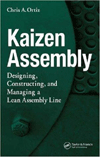There are many variables to consider when specifying linear guides, says George Martin, director of product management with the Linear Motion and Assembly Technologies Div. of Bosch Rexroth Corp. (Charlotte, NC). These variables include load, accuracy, rigidity, smoothness, speed, acceleration, deceleration, travel length, envelope, environment, duty cycle, life expectancy, installation and maintenance. Even the product to be moved is important. For example, a plain bearing made from a self-lubricating polymer is good for food-handling applications, because it withstands cleaning and won't contaminate the food.
Of these variables, the load is the most important. "The actual load, not the load plus a safety factor is needed to specify a guide," notes Andrew Cook, general manager of Rollon Corp. (Sparta, NJ). "I also need the dimensions of the load, which determine how many rails and sliders are needed."
Knowing the load helps to select the bearings. Plain bearings require more force to move than ball bearings, so they're limited to supporting small loads. They're good for short-stroke, high-cycle applications. Ball bearings are good for long-stroke, high-speed applications. Rollers spread the load over a larger contact area than ball bearings, so they can carry heavier loads.
The load is important when choosing between round rails or profiles, but it's not the only factor. Profile rails are flat on the top and bottom. The sides are concave with ball-conforming races where the bearings roll. This stiffens the rail and enables the guide to handle heavy loads. Round rails can be mounted with end supports, continuous support or no support. They are smoother and more forgiving than profile rails, but not as accurate. Profile rails are more rigid and accurate than round rails, and they're more resistant to roll moments. However, profiles must be mounted to a highly flat surface with straight reference edges.
"With round rails, you don't have to grind the mounting surface, so installation costs are much less," says Al Ng, chief engineer at Danaher Motion's Linear Motion Systems Div. (Port Washington, NY). "With profile rails, you must have a very flat surface—typically within [0.0002 inch]—so there are no induced loads on the carriages."
Guide wheel systems were developed as a way around mounting problems. Guide wheels can ride on the rails, like train wheels, or they can ride inside a C-shaped rail. The latter can self-align to another rail if the mounting surfaces are not perfectly parallel.
Travel length is another consideration. Is a standard length available to meet your need? If not, some rails accommodate butt joints better than others. Similarly, the envelope can govern which guide to use. "If you have 2 feet of mounting space and 4 feet to move, you need a telescopic rail," says Cook.
Another factor to consider is the environment. For example, polymer bearings have limited ability to withstand temperatures above 300 F, while steel bearings can be exposed to 500 F. If the guides will be used in a vacuum, outgassing is a concern. If the guides will be exposed to contaminants, guide wheels are a good choice, because they are sealed and because their shape sweeps aside debris, says Robert Wisecarver, special projects coordinator at Bishop-Wisecarver Corp. (Pittsburgh, CA). For clean rooms, rails can be plated with Armaloy, black oxide or electroless nickel.
Precision is one variable that engineers often overspecify. Linear guides for opening and closing doors on a machine tool do not have to be as precise as guides for positioning sensors in a medical imaging application. "I often see extremely rigid bearings force-fit into applications that just need to go back and forth," says Ng.



